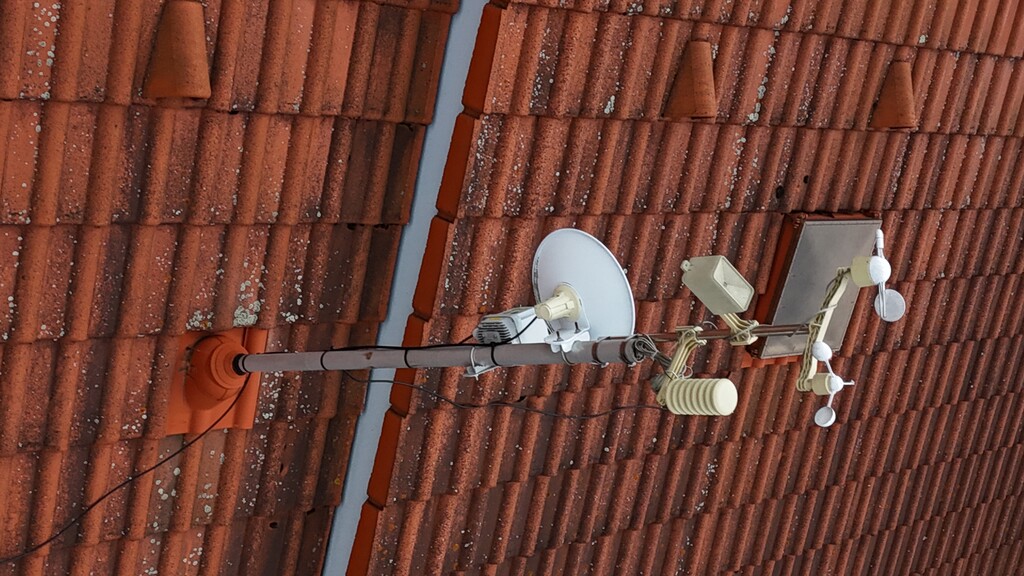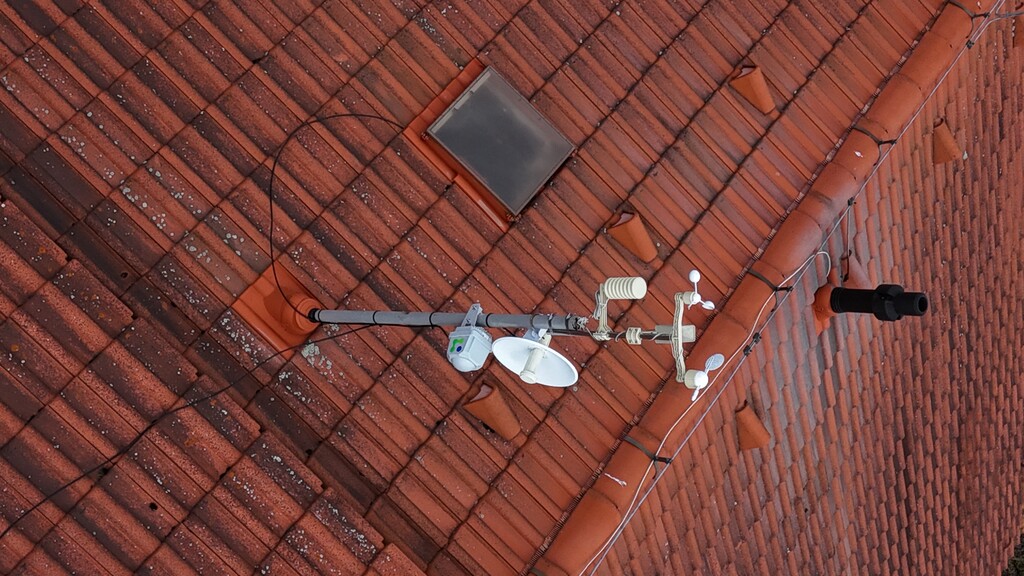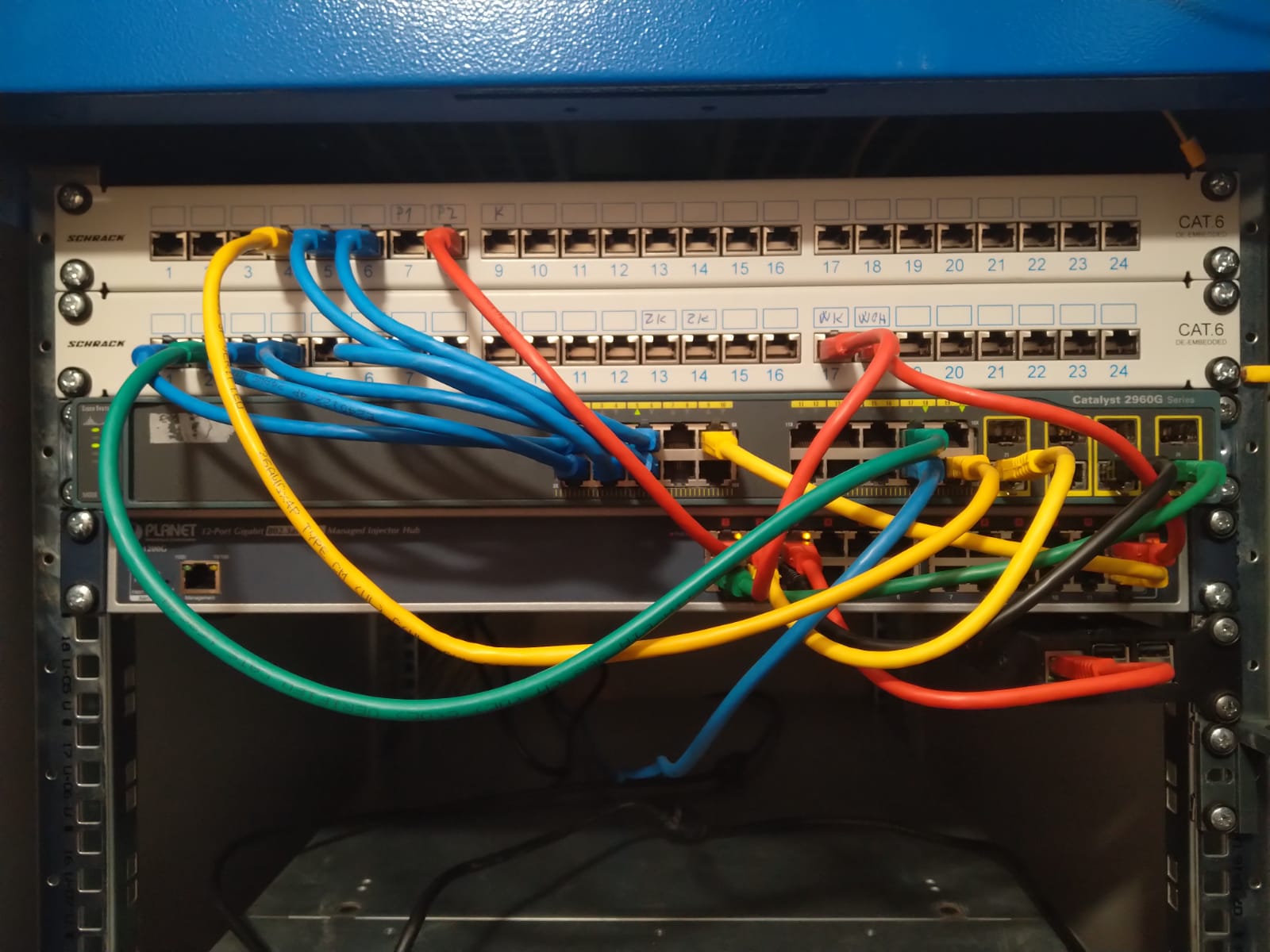Antenna Maintenance with Drone Assistance
Written by Dominik Pantůček on 2025-05-08
droneroutingRecently we had to get our last mile Internet connection upgraded. Switching to 60GHz technology gives us shorter rount-trip time and allows for higher bandwidth up to 1Gbps right now and about 2.5Gbps in the future. But being a wireless technology, some work had to be done physically on the roof of our offices building.
Given the fact that we are a licensed drone operator and we do have a pilot being able to fly in the A1/A3 flight categories, we took this opportunity to test how useful a drone can be for performing the antenna replacement. Although one can argue that the actual improvement is even negligible, when it comes to improving the convenience of such operation, having a live drone footage makes any coordination between the personnel on the roof and in the server room super easy.
Because of the applicable personal information protection legislation and other regulations, we are not posting any pictures from the actual replacement works. However we can have a look at the result from high above the roof:


While the technician was finishing the replacement, we quickly learned the news about the new device being 802.3af PoE (power over ethernet) compliant. So when we were instructed to inject power to the ethernet cable going from the server room up to the socket in the attic and to the wireless device on the roof from there, we just passed the relevant VLAN ethernet cable through our active 802.3af/at PoE injector which we already use for a few other devices:
- Raspberry Pi as the router for our offices' networks
- Cisco WiFi AP for the main office
- Raspberry Pi as the on-air sign and controller for our A/V studio
And therefore there are no more AC/DC converters hanging in between the ports in the upper part of the main rack:

After plugging the power and ethernet it, our offices public IPv6 /56 prefix and the lonely IPv4 /32 address went immediately online.
| Protocol | Speed [Mbps] | RTT [ms] | ||||
|---|---|---|---|---|---|---|
| Downlink | Uplink | Min | Avg | Max | MDev | |
| IPv4 | 56.8 | 28.8 | 3.230 | 3.796 | 4.775 | 0.394 |
| IPv6 | 56.8 | 112.0 | 3.351 | 3.358 | 3.856 | 0.139 |
As can be seen in Figure 1, the downling and uplink speeds are very interesting and apparently for IPv6 the limits by the upstream provider are well relaxed to put it mildly. We definitely will not complain about that.
All in all our offices are now connected to the Internet using faster, lower-latency and more reliable link. And on top of that the whole office infrastructure is now mostly ready for completely DC power supply which may lower our operational costs in the future - in addition of being a very interesting technological project on its own.
If you liked our adventures in the wireless space, make sure to stop by every other thursday to see what other fun stuff we have been working on. See ya next time!
